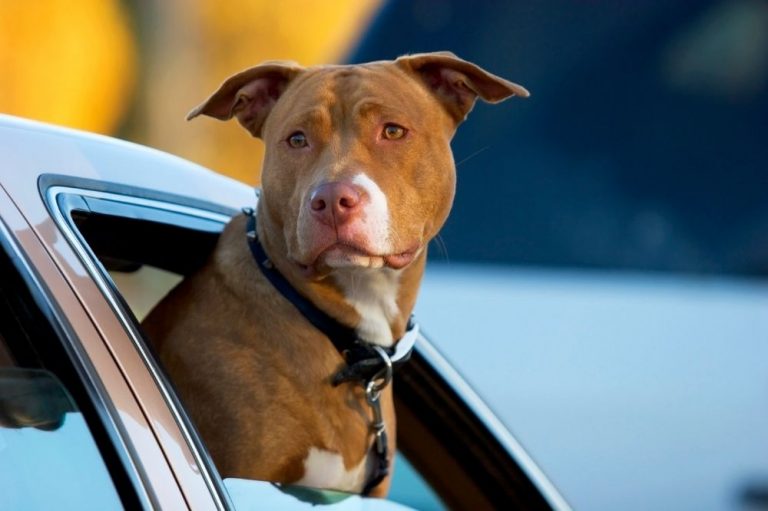Blue English Bulldog (Complete Guide)
Although they may not be among the most popular dog breeds, the Blue English Bulldogs are among the dog breeds that are a joy to have in any family. Therefore, if you are looking to bring in a new member into the family, it’s one of the dog breeds you will hardly regret having around.
Now, whether you are getting a puppy from a professional breeder or adopting one from an animal shelter, having the 411 on these dogs will go a long way to help you know how to interact with them.
With the information on the ins and outs of these dogs, you will be in a better position to give them the wonderful life we all want to afford our lovely four-legged companions. So, what’s there to know about Blue English Bulldogs?
Well, in our today’s article, we are only going to talk about Blue English Bulldogs. We’ve gathered much information right from the history and origin to appearance, size, personality, training, health, diet, and more. Just spare a few minutes to read through.
History and Origin of Blue English Bulldog
The first thing we are going to look at about English Bulldogs is their origin. The name “Blue English Bulldog” may sound new to most people. But is the breed really new? Not at all! This breed has been there since the early 13 century.
During this period, a pack of bulldogs was supposed to participate in the then famous bullbaiting. This sport involved a group of these dogs fighting a skated bull. The spectators were supposed to place their bets on who they thought would win.
However, after the banning of blood sports in England in 1835, bullbaiting started dying out. That’s when the breeders began the process of “finetuning” the breed to make it more attractive and one that can make a great companion. It’s in this process where the modern-day bulldogs came to be, including the Blue English Bulldog.
Blue English Bulldog Appearance
Before we proceed any further, it’s good we know the external appearance of a Blue English Bulldog. But first—why do we call it “Blue” English Bulldog? Is the breed any different from the traditional English Bulldog?
If those are among the questions racing in your mind, you will find the answers shortly. The “Blue” in their name has something to do with their appearance. That brings us back to the main agenda of this section—how do these dogs resemble?
Well, the fur of these dogs is blue. However, the undercoat can either be fawn or white. The eyeliners, nose, and footpads are also blue. Therefore, the blue color is so dominant in their external appearance, and that’s where we get the name “Blue” English Bulldogs. This color is also the only difference between them and the famous English Bulldogs.
However, when talking about “blue” here, we don’t really mean one that compares to navy blue or sky blue. In fact, if we were to use the closest color to describe their pigmentation, we would say they are silvery-greyish.
The coat of these dogs is usually short and textured. They also have a large head, especially for their size. The muzzle is incredibly short with fleshy lips. The dogs also have wrinkles and folds of excess skin on the head and their whole body.
Size, Weight, and Lifespan of Blue English Bulldog
About the size, Blue English Bulldogs are medium-sized. Usually, a Blue English Bulldog will have a shoulder height of anywhere between 12 inches and 16 inches when mature. That’s regardless of whether it’s male or female.
With this size, it’s evident that they don’t need plenty of space for moving around. Hence, unlike some dog breeds, Blue English Bulldogs can thrive in apartments and other homes with a limited amount of space.
When talking about weight, you will be surprised to discover that males can weigh as much as 50 pounds, even with that stature. However, female Blue English Bulldogs generally weigh below 40 pounds.
The lifespan of these dogs is about 13 years. However, as with other dogs, it’s important to note that your dog may live longer or shorter than this time. That will depend on the level of care, health, diet, and other factors.
The Personality of Blue English Bulldog
Before you welcome any dog into your home, you should understand the temperament of the dog. You have to know how the canine behaves towards people, visitors, children, and other pets as well. That brings us to understanding the personality of the Blue English Bulldogs.
Fortunately, Blue English Bulldogs have larger than life personality. They are kind, peaceful, courageous, and friendly canines. Unlike their ancient parents that portrayed some form of vicious behavior, Blue English Bulldogs aren’t aggressive.
Their high level of loyalty demands human attention in return. Therefore, if you know you aren’t going to get enough time to interact with your pet, Blue English Bulldog may not make the perfect pet for you.
Their gentle and loving disposition means that Blue English Bulldogs can make perfect family pets. They enjoy spending most of their time playing with the little members of the family. Therefore, if your juniors are passionate for dogs, this dog breed will bring joy to their lives and the family as a whole.
While they may not be good barkers, their braveness means that Blue English Bulldogs are ready to put their life on the line for the sake of their beloveds. Since they are social beings, they value spending their time around other pets.
However, it’s worth knowing that developing a dog with such a personality requires training and socialization. That’s what sets apart two dogs of the same breed. Without training and socialization, even the friendliest dog breed may portray a standoffish behavior around unfamiliar faces.
Blue English Bulldog Training
You can compare the intelligence level of Blue English Bulldogs to that of the smartest breeds like Border collies, German shepherds, and Poodles. That means training your Blue English Bulldog will need some patience, dedication, and hard work.
These dogs will usually need about 80-100 repetitions to understand new commands. After learning, they will obey the first command for at most 25% of the times. That’s according to stats by Stanley Corren.
From his stats, it’s evident that they are neither the most intelligent nor obedient dogs. Fortunately, Blue English Bulldogs love to please their human partners. That’s what ensures that training runs smoothly.
It is recommendable that you begin the training when your Blue English Bulldog is young. A puppy that’s about eight weeks old is eligible for training. That’s the time you want to teach them that not everything around the house is for chewing.
You can train the dog by yourself if you have the time. Alternatively, you can hire the services of a professional dog trainer. When doing the job yourself, remember to use positive reinforcements. You also need to be consistent in your commands and keep the sessions short but more frequent.
Blue English Bulldog Exercise Requirements
Although they will need much of your time, Blue English Bulldogs aren’t the most active dog breeds. You can’t compare their daily exercise requirements to that of German shepherds, Border collies, and Retrievers.
However, you will still need to find some time for their mental and physical stimulation. With that said, what level of exercise do these dogs need? Well, 20 to 40 minutes of daily exercise are enough to keep your dog in optimal health.
The type of exercise will depend on what’s convenient for you alongside other factors. Finding some time to walk is one way. In case you are too busy for regular walks, dedicating a few minutes for play before and after work can also do the trick.
However, when exercising outdoors, ensure that the weather conditions are supportive as these dogs tend to overheat faster. Also, ensure that the exercise isn’t so intense as it may cause some breathing difficulties.
Ensure that you don’t forget mental stimulation. Have your dog solve puzzles to keep their mind sharp. Getting interactive toys is another way to keep them mentally engaged. Mental stimulation is as important as the physical.
Nutritional Needs For Blue English Bulldog
Dogs need a healthy diet to stay healthy. You should know the food that’s good for your dog. Also, overfeeding or underfeeding your dog can attract trouble. So, what’s the best food for your Blue English Bulldog? How much of it do they need?
Well, like any other dog, Blue English Bulldogs need food that’s rich in proteins. However, the protein content will depend on the age of the dog. For instance, 22% of a puppy’s daily food should be protein. An adult will need 18% protein content in their daily food. That’s according to the Association of American Feed Control Officials (AAFCO).
The association goes ahead to name fats as the second most essential nutrient for dogs. AAFCO recommends 8% proteins for puppies and 5% for adult Blue English Bulldogs. This intake level also applies to all other breeds.
In terms of daily caloric requirements, 1358 calories are enough for a dog weighing 50 pounds. However, you can vary this amount depending on the age, health condition, and the dog’s exercise level.
Young and energetic dogs will need more calories to give them enough energy. However, if your Blue English Bulldog likes spending the best part of their day sleeping around, fewer calories are good to keep them from getting overweight.
One thing to remember is that the daily caloric requirement includes snacks. Therefore, if you are using treats for behavior reinforcement, ensure that you follow the 90-10 rule. In other words, 90% of your dog’s caloric intake should come from food. The remaining 10% should be from the treats.
Also, ensure that you divide their daily ration into several meals. Usually, young puppies will need to feed more frequently but in smaller quantities. You can divide the food at least four times. For adults, two or three mealtimes a day work just fine.
Blue English Bulldog Grooming & Care
In dogs, grooming is as essential as food and exercise. Blue English Bulldogs have a relatively short coat. The good thing is that they aren’t heavy shedders. However, you will still need to brush their coats at least once a week to remove dead hair.
The relatively short hair means they are less likely to get dirty and smell bad. A single bath every month should keep them comfortable. However, you may need to bathe them sooner during the summer when the sun is too hot.
Between baths, examine the wrinkles around their face and body to ensure that they are clean and healthy. That’s because the loose skin may trap dirt and food, attracting bacteria and other disease-causing microorganisms.
Another area you need to pay attention to is the ears. Ensure that you clean the ears of your pet weekly to prevent infection. Additionally, ensure that you cut the nails after every three weeks to keep your pup happy and healthy.
Talking about oral care, you will need to be more strict here. Blue English Bulldogs are susceptible to oral-related issues. A case in point is underbite, an oral condition that causes trouble in chewing. To keep oral issues at bay, brush the teeth of your Blue English Bulldog at least three times a week.
Health Risks of Blue English Bulldogs
Although they are generally healthy, Blue English Bulldogs are subject to some health issues. Most of these conditions are congenital, although the majority of them can result from lifestyle. Some of these conditions include:-
- Hip dysplasia
- Cherry eye and other eye-related issues
- Overheating
- Canine malocclusion
- Cancer
- Head shakes
- Degenerative spine disease
- Respiratory issues
- Joint and ligament injuries
Where the condition is not hereditary, it’s most of the time preventable. You just have to ensure that you get it right when it comes to exercise, diet, and grooming. Another effective way to keep your Blue English Bulldog is through vaccination.
The Price of Blue English Bulldogs
Blue English Bulldogs aren’t famous like some dog breeds. If you want one, you might find it hard to get a breeder. Once you get one, they are quite expensive. For a Blue English Bulldog puppy, be ready to part with at least $5000. That’s more than what other dogs may cost—and for a reason.
For instance, since they have large heads, natural birth for females is basically not possible. That means the breeder will need some money to pay for the C-section. If you want a pup with unique qualities, you will also have to pay more.
If you aren’t willing to meet the price tag, you can try your luck in adoption agencies. Here, you will need to pay less. However, one disadvantage of adopting is that you may not know whether the two parents of the dog were purebred.
Final Word
With proper training, a Blue English Bulldog can make a wonderful family pet. These dogs love to interact and stay around people and other pets. In terms of exercise, they don’t need much. That means they can make good family pets, even for the “busy bees” who don’t have much time for walks.
However, before you get one, there are a few things you need to know. Firstly, they aren’t among the brightest dogs. That means you will need to work harder in training. Secondly, just like other dogs, they are vulnerable to some diseases, albeit most of the time preventable.
Lastly, they cost more. The breeders aren’t also easy to get. Other than that, Blue English Bulldogs are a real blessing to any family.







